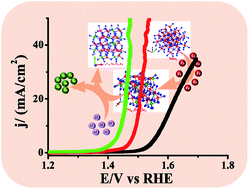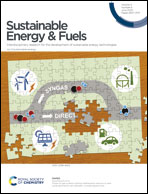The role of Se vacancies and Fe doping of nickel selenide in the water oxidation reaction†
Abstract
The catalytic activity and reactivity of catalysts can be varied by adopting methods such as composite formation, doping with foreign atoms, and creating vacancies. Researchers are studying different catalysts to obtain clean energy from renewable energy sources. Highly competent and potential catalysts toward the oxygen evolution reaction (OER) are required for commercialisation. Transition-metal diselenides are promising electrocatalysts for OER. Combining both experimental and theoretical results, we demonstrate that both Fe incorporation and Se vacancy engineering in the catalyst NiSe2 improve the electrocatalytic activity toward OER. Fe-doped NiSe2 with Se vacancies (VSe–Ni0.70Fe0.30Se2) shows enhanced OER activity and requires an overpotential of 210 mV to achieve the current density of 10 mA cm−2. This value is much lower than that of the benchmark catalyst IrO2/C. The results of density functional theory calculations show that both Fe doping and Se vacancies increase the density of states near the Fermi level, increasing the conductivity of the VSe–Ni0.70Fe0.30Se2 catalyst. The calculations also reveal a decrease in the free energy of the reaction intermediates, resulting in enhanced electrocatalytic OER activity.



 Please wait while we load your content...
Please wait while we load your content...